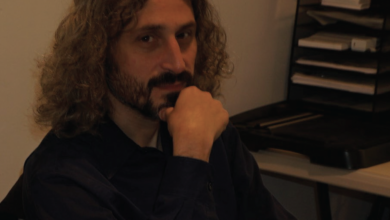The truth about landfills: Where does your trash really go?
By Ashlyn Whiteside
Nothing you throw away actually goes away. Once trash leaves your hands, it has a life of its own and will probably outlive you.
According to Global Citizen, “The U.S. generates more than 258 million tons of municipal solid waste each year — that’s all the packaging, clothing, bottles, food scraps, newspapers, batteries and everything else that gets thrown into garbage cans and hauled onto sidewalks for weekly pick-up.”
If you remember your middle school science class, you remember the law of conservation of mass which tells us that “matter is neither created nor destroyed.”
Manufacturers have pulled resources like oil out of the ground, cut down trees and created products for us that we use every day. Every single thing you throw away is on the Earth for the rest of your life.
Where does it go? A landfill.
A landfill is a large hole carved into the ground lined with clay and plastic to hold the waste. It is easy to think: What could be so bad about a pile of trash? Surprisingly enough, there are some very hazardous toxins and gases that landfills create.
The gases released in a landfill is, you guessed it, carbon dioxide and methane gas. These gases are greenhouse gases that trap heat in the atmosphere, but methane is 20 times more retentive to heat making it 20 times worse for climate change.
The toxin, leachate, is a liquid produced from the trash, which can leak into our waterway and soil, potentially raising major contamination concerns. Not to mention, these large holes are far from limitless.
It is predicted by FastHaul that by 2035, our landfills will reach maximum capacity. Once they reach capacity, what do we do?
Did you know there are 150,000 tons of food thrown out in households across the nation every day?
Every semester in Daly Dining Hall, the Eco-Reps bring out the scales and block off the trash cans in the dining hall for an event known as “Weigh The Waste”.
Everything thrown away in a span of an hour and a half is weighed and the result on our campus alone is shocking. In 2018, nearly 70 pounds of food waste was collected in 1 hour and in 2019, the amount dropped to nearly 50 pounds. While there is no evidence as to why a decrease took place, the hope is that people are more aware of the impact of their actions.
Junior health science major Lauren Farley said, “Every year when it is “Weigh The Waste” day in Daly [Dining Hall], I don’t want to bring up a plate full of food. I’ll waste less when they are there, but in reality, shouldn’t we all be thinking like that every day?”
The answer is yes, and going forward, I hope we all will.
Humans produce waste. There is no denying it, but as a result of landfills and their unfortunate reality, we must consider how to be more environmentally sound with disposable items.
Junior musical theatre major Timmy Bradford said, “I live in a house of six people, and the amount of waste we have each week is insane. I feel guilty every time I open the trash can to throw something away.”
Everyone needs to be more like Bradford because feeling guilty means you are aware, which will make you be a part of the solution.
So how can you help?
Avoid single-use disposables, try recycling more to significantly reduce your personal waste and consider going digital for newspapers and magazines to save the waste (recycling or not).
In a time where single-use waste is unavoidably high because of COVID-19, do your best to reduce your personal waste to contribute to a healthier planet.



